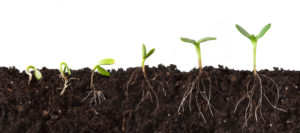APPLICATIONS OF TECHNOLOGY:
- Plant breeding
- Subsurface plant health and forestry tree health
- Crop and drought management
BENEFITS:
- Enables quick quantification of underground root parameters in real time
- Permits imaging of subsurface root structure without disrupting roots
BACKGROUND:
- The development and testing of new chemicals, microbial amendments and equipment to optimize crop growth has been limited by a single roadblock: the inability to monitor roots in real time and without concurrent destruction of the roots.
TECHNOLOGY OVERVIEW:
Researchers at Berkeley Lab have assembled a Tomographic Electrical Rhizosphere Imager (TERI) to quantify underground root parameters in real time.
The hardware-software package works by sending a small amount of electrical current to the root system via the stem. The response of the roots to the stimulation is measured between the stem and the soil, resulting in readouts that provide key information about the subsurface root structure (e.g., root mass and root length).
Scientists overcame such technical problems as understanding the impact of soil conditions on the signal, geometric arrangement of electrodes, and linking the measured signals to root traits of interest. The innovative technology is an improvement over current technologies because it allows field scale root characterization without destructive analysis of the soil and root systems.
TERI won first place in the 2021 Bayer Grants4Tech Challenge.
DEVELOPMENT STAGE: Proof of principle
FOR MORE INFORMATION:
https://arpa-e.energy.gov/technologies/projects/imaging-and-modeling-toolbox-roots
PRINCIPAL INVESTIGATORS:
STATUS: Patent pending.
OPPORTUNITIES: Available for licensing or collaborative research.
